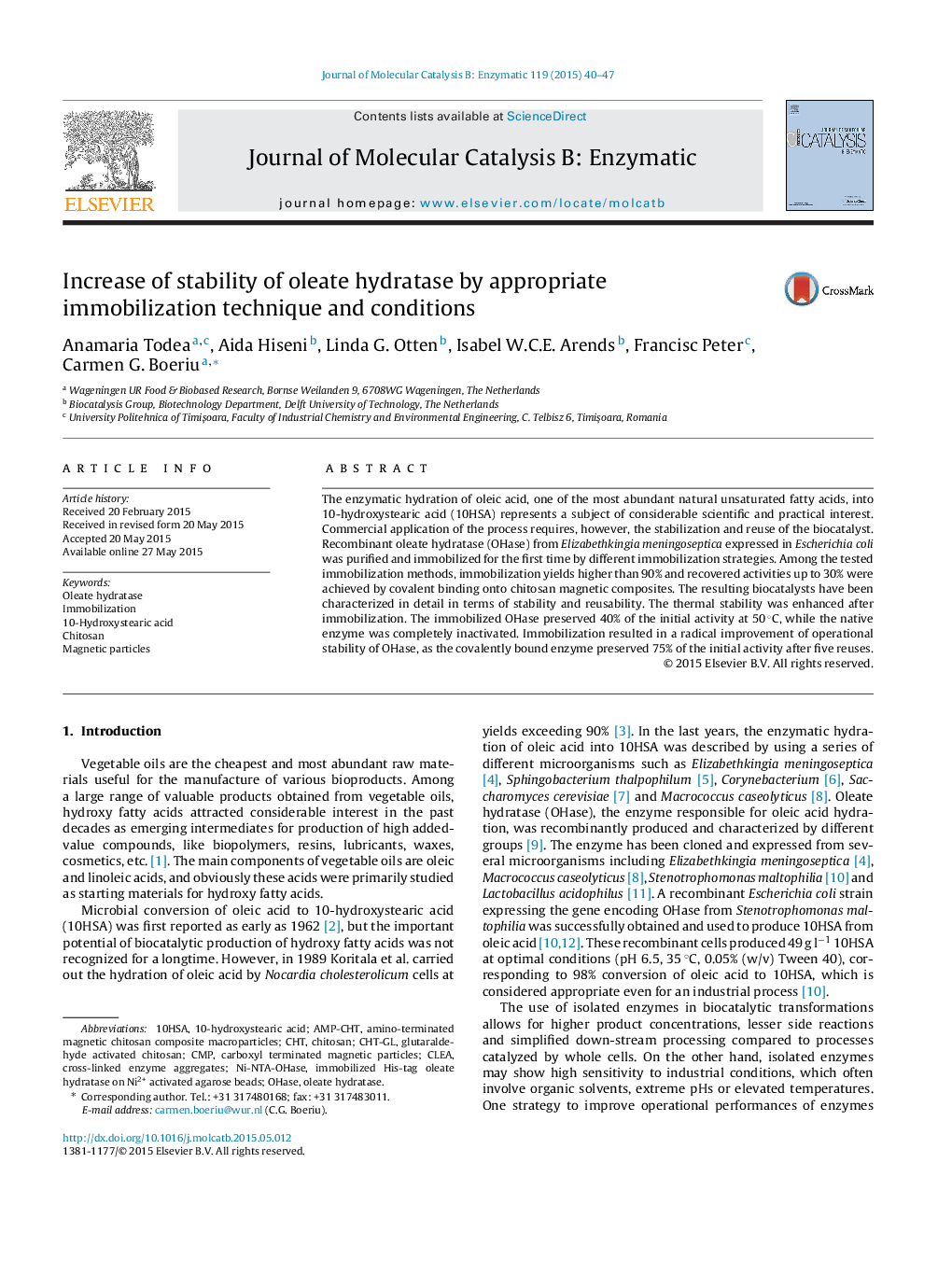| Article ID | Journal | Published Year | Pages | File Type |
|---|---|---|---|---|
| 69649 | Journal of Molecular Catalysis B: Enzymatic | 2015 | 8 Pages |
•Non-commercial oleate hydratase from Elizabethkingia meningoseptica was purified and immobilized by different techniques.•Among six immobilization methods, covalent binding onto magnetic chitosan composite was the most efficient.•The immobilization led to higher thermal and pH stabilities.•The immobilized biocatalyst preserved 75% of the initial activity following five reuses.
The enzymatic hydration of oleic acid, one of the most abundant natural unsaturated fatty acids, into 10-hydroxystearic acid (10HSA) represents a subject of considerable scientific and practical interest. Commercial application of the process requires, however, the stabilization and reuse of the biocatalyst. Recombinant oleate hydratase (OHase) from Elizabethkingia meningoseptica expressed in Escherichia coli was purified and immobilized for the first time by different immobilization strategies. Among the tested immobilization methods, immobilization yields higher than 90% and recovered activities up to 30% were achieved by covalent binding onto chitosan magnetic composites. The resulting biocatalysts have been characterized in detail in terms of stability and reusability. The thermal stability was enhanced after immobilization. The immobilized OHase preserved 40% of the initial activity at 50 °C, while the native enzyme was completely inactivated. Immobilization resulted in a radical improvement of operational stability of OHase, as the covalently bound enzyme preserved 75% of the initial activity after five reuses.
Graphical abstractFigure optionsDownload full-size imageDownload as PowerPoint slide
